Cutting Carbon With Greener Chainsaws
Loggers and conservationists might seem unlikely allies—but together they can reduce impacts on tropical rainforests and help tackle climate change
Key Takeaways
Working forests account for one-fifth of the world’s tropical forests—meaning better forest management, not just preservation, is required to protect these important ecosystems
Reduced-impact logging for climate (RIL-C) allows loggers to cut land-based carbon emissions while maintaining timber yields—it bridges environmental and economic goals
RIL-C is still an emerging strategy, but growing demand for sustainable timber and recognition of nature’s role in fighting climate change could set the stage for wider adoption
Few environmental issues are more pressing than the protection of our tropical forests. These forests have the highest rates of biodiversity on earth and hold significant carbon stores that are released into the atmosphere when they are converted.
Yet the focus of protection efforts tends to get polarized. Plenty of attention goes to preserving pristine, untouched forests. Plenty more goes to curbing deforestation more broadly. But surprisingly little attention is given to the middle ground: the vast forest areas that are already designated for selective logging.
The fact is, this middle ground covers one-fifth of the world’s tropical forests—1.5 million square miles, an area considerably larger than the entire country of India. By contrast, all the world’s protected forests amount to an area less than half that size.
If this vast area of selectively logged forests was managed responsibly, it could help counteract both deforestation and climate change. In fact, new research shows how forest managers can maintain their timber harvests while cutting carbon emissions by as much as 50 percent through a set of techniques known as reduced-impact logging for climate, or RIL-C. Prescribing any kind of logging for environmental benefits is a little counterintuitive and controversial, for good reason. To work, it needs strong sustainability safeguards already place.
Prescribing any kind of logging for environmental benefits is a little counterintuitive and controversial, for good reason. To work, it needs strong sustainability safeguards already place.
But our best assessments indicate climate change is happening even faster than we thought, even as demand for timber products is growing and many tropical countries are looking to grow their economies through forestry and other land-based industries.
We have to have find ways to reconcile economic and environmental goals if we’re going to achieve climate-friendly sustainable development.

Reconciling the environmental with the economic
As its name suggests, RIL-C is a way to link logging practices with carbon mitigation. RIL-C was developed by The Nature Conservancy (TNC), and piloted with partners such as WWF and the Tropical Forest Foundation. These methods have been incorporated into a formal RIL-C methodology, written by TerraCarbon and TNC, which is now freely available for implementation.
There is a growing body of academic research showing RIL-C methods have huge potential, but implementing them does require certain policies and incentives in order to bring the interests of the logging industry, governments, local communities and nature into alignment.
A well-managed, selectively-harvested forest can retain more than 90 percent of its carbon stores and most of its biodiversity. And because careful harvesting causes less damage to remaining trees, reduced-impact logging promotes rapid regrowth to maintain habitat and increase stocking of new timber. Furthermore, a well-managed, selectively-harvested forest provides a steady supply of timber and jobs, providing an alternative to what can be more destructive land-uses, like mining, ranching or oil palm plantations.
RIL-C brings these environmental and economic dimensions together by strengthening the link between good forest management and forest protection. Clarifying the best practices for maximizing living carbon in forests and allowing forest managers to access incentives for climate mitigation strengthens the economic argument for keeping forests as forests.
RIL-C techniques include taking more care in tree selection and in the direction of felling, the building of fewer and narrower access roads, the mapping-out of skid routes, and the use of specialist forestry equipment such as winches instead of just bulldozers.
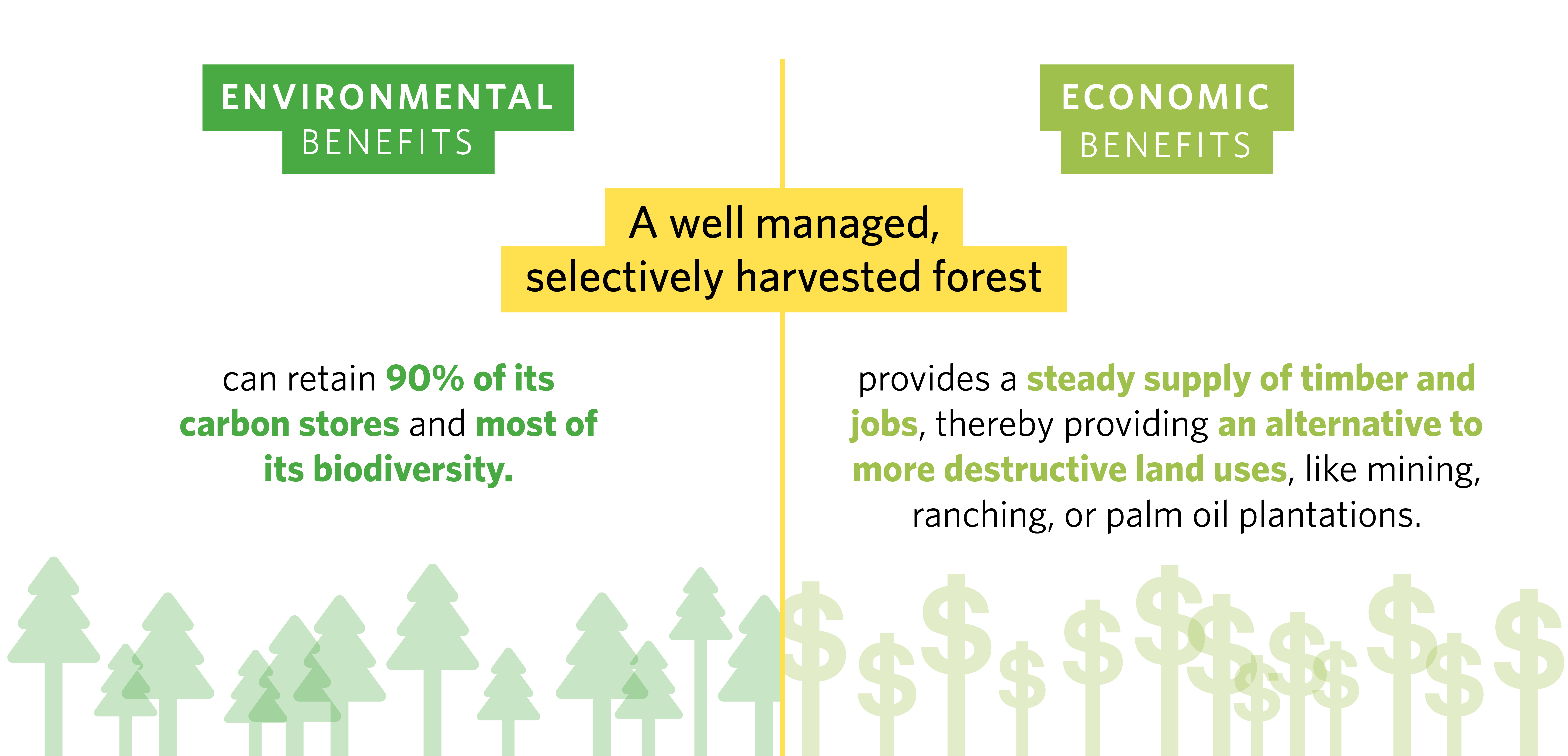
Implementation of a formal RIL-C program begins with a baseline study to quantify the existing country-level emissions. An investigation of existing logging practices in a given geographic region, as well as the forest types within it, identifies unnecessary or collateral damage to the forest and, therefore where and how the biggest carbon savings could be made. Then, once new logging practices have been applied, rapid field-based assessments can quantify and validate the benefits.
Trees are typically around 50 percent carbon by mass, so the carbon stocks that are lost from needlessly felled trees and degraded forests quickly add up. In fact, forest degradation is believed to account for between one-third and two-thirds of land-based carbon emissions, and about half of these degradation-related emissions are caused by logging.
But the opportunity for improvement is also large. Recent research by The Nature Conservancy (TNC) and partners indicates that adopting RIL-C practices can reduce logging emissions by as much as 50 percent—without reducing timber supply.
Quote
If this vast area of selectively logged forests was managed responsibly, it could help counteract both deforestation and climate change.
Putting RIL-C into practice
All fantastic in theory, but how do you actually convince the logger on the bulldozer, working a legal concession with little apparent incentive to change his behavior?
Few people understood this issue more than the late Art Klassen. Klassen spent much of his life in Indonesia with the Tropical Forest Foundation, an NGO that promotes the principles and advantages of sustainable forest management, and before that spent years as a logger himself.
“We’re a relatively small NGO, with little leverage,” explained Klassen. “So, our best strategy is to convince operators of the financial benefits. We give them training. We explain the benefits of working more methodically. We set up trial programs. And we get them to compare the results from the old, opportunistic way with the new, more orderly approach.”
In fact, the efficiencies from RIL-C can be surprising, and not just from an environmental perspective. For example, reductions in utilizable wood waste can be as high as 50 percent, with increases in long-term timber stocks from 10 to 20 percent.
RIL-C also provides the operator or concession holder a credible way to quantify carbon savings, which could itself become a commodity that can be extracted from selectively-harvested forests. As the world continues to see the value of fighting climate change, it could bring an added opportunity for remuneration to the operators and concession holders.






Growing government support
For national governments, the case for RIL-C can be particularly compelling. Almost every country worldwide has made commitments under the Paris Agreement, and there’s growing awareness that natural climate solutions are vital to cutting emissions. In many countries, improved forest management and reduced rates of deforestation and degradation are key features of their national determined contributions (NDCs), and RIL-C can deliver part of the solution in a straightforward way.
RIL-C is now being evaluated in seven countries (Indonesia, Mexico, Peru, Suriname, Gabon, the Democratic Republic of Congo and the Republic of Congo). In three of these countries – Indonesia, Gabon and Suriname – the respective authorities are already piloting RIL-C accounting and aiming to use it to help meet their Paris commitments.
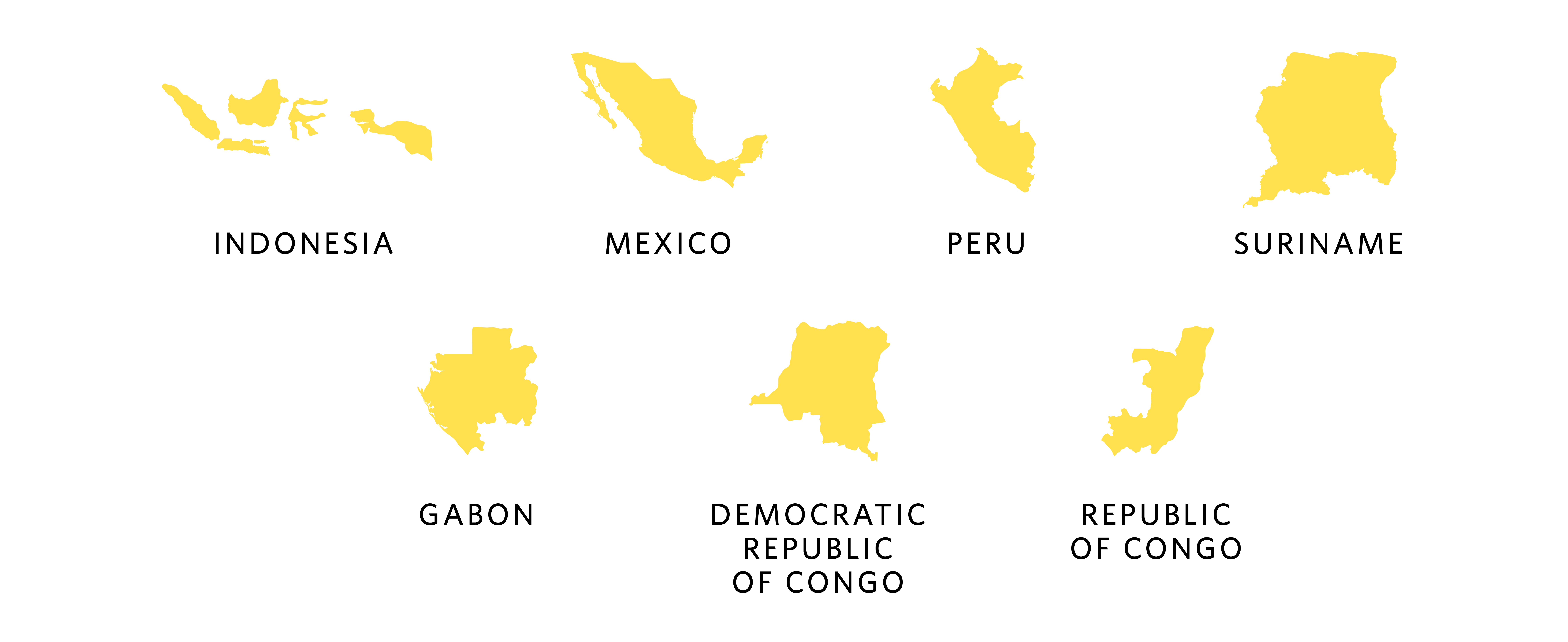 Although relatively small in both landmass and population, Suriname plays a disproportionate role in global carbon terms. With trees covering 93 percent of the total land area, it is the world’s most forested country by proportion, storing around 11 gigatons of carbon—and with a majority of its nearly 600,000 citizens living in low-lying coastal areas, it is also highly vulnerable to climate change.
Although relatively small in both landmass and population, Suriname plays a disproportionate role in global carbon terms. With trees covering 93 percent of the total land area, it is the world’s most forested country by proportion, storing around 11 gigatons of carbon—and with a majority of its nearly 600,000 citizens living in low-lying coastal areas, it is also highly vulnerable to climate change.
Around 2.5 million hectares of Suriname’s forests (out of a total of 16 million hectares) is currently set aside for sustainable timber production. The country’s Foundation for Forest Management and Forest Control (SBB) is working to keep track of these operations and check the extent to which concession holders fulfill their commitments and follow national policies and obligations—including through the implementation of RIL-C.
“A national baseline study has been conducted in partnership with TNC, to judge the impact of existing forestry operations and prioritize improvements,” explains Sarah Crabbe, who helps coordinate the Forest Monitoring System as part of the SBB. “RIL-C is central to this process… The aim is to keep the impact of logging to a minimum, so that the natural dynamics of the forest are imitated.”
“It’s as though all of the pressure is currently on the producers and not being shared with the buyers. Maybe one day the markets will understand the carbon benefits of sustainable logging and make their purchasing decisions accordingly. But, in the meantime, it is first-movers like the loggers here in Suriname who are shouldering the costs up-front.”
Quote: Stuart Clenaghan
I see an unstoppable movement towards sustainability. People demand it. Governments will respond with new regulations. Markets will react by insisting on verified products.
An 'almost infinite’ demand for credibly certified timber
There are signs in the market this could be changing, though.
"Right now, global demand for timber is almost infinite, as rising incomes and urbanization underpin markets,” says Stuart Clenaghan. Originally trained as a scientist, Clenaghan spent more than 20 years in capital markets before co-founding Green Gold Forestry Peru (GFF), a Forest Stewardship Council® FSC®-C104253-certified sustainable forest products company. “If you can demonstrate the sustainability credentials and provenance of your products, you can easily access any market in the world. If you’re not able to do that, your options are more limited, and you’ll often be forced to take a discount."
Consequently, GGF is an ardent advocate of reduced-impact logging. It applies many of the sustainable forestry techniques behind the RIL-C protocol but has yet to get involved in a baseline study as required to certify the carbon savings. “The great thing about RIL-C is that it explicitly makes that link between sustainable management and carbon emissions,” Clenaghan says. “We believe the more enlightened buyers are soon going to start demanding it.”
Clenaghan is also hopeful that the sheer weight of consumer pressure will accelerate the change. “I see an unstoppable movement towards sustainability. People demand it. Governments will respond with new regulations. Markets will react by insisting on verified products.”
An added dimension is the projected global growth in the demand for timber. By some estimates, this could increase 30 percent by 2030. If, as Clenaghan believes, the international markets gravitate more strongly towards credibly certified, sustainable wood products, this bodes well for RIL-C and other climate-smart forestry practices.
Aligning incentives and scaling up
Still, while RIL-C is currently being developed in seven countries around the world, so far the scale is small. So, what can be done to amplify the message and accelerate the process?
Clearly, governments are crucial stakeholders. In tropical countries, they set the framework for national forestry practice and policy. Many of them also grant rights of tenure to forest lands that enable concession holders to plan and invest for the long term. In addition, they have much to gain by including the potential dividends from RIL-C in their NDCs for the Paris Climate Agreement.
Of course, it’s not just the producer countries—consumer countries have the power to introduce legislation that prohibits the purchase of wood products that lack a legal chain of custody, and they could set other sustainability standards for wood products. Incentivizing climate-friendly certification like the Ecosystem Services Procedure, developed by the Forest Stewardship Council (FSC), can help bring these efforts to scale.
The business community also has an important role to play, and the option to insist more adamantly on the purchase of certified timber products. A trailblazer in this regard is International Paper, which is collaborating with TNC on RIL-C and other improved forest management practices. Another option open to businesses are the voluntary carbon markets. These could provide a way to directly compensate operators and concession holders for their investments in RIL-C, while also participating in a credible carbon offsetting program.
Quote: Gijs Breukink

If forests are responsibly managed as valuable economic resources in themselves, they will remain forests.
Broadening the base of support
One of the more vocal proponents is global NGO WWF and Gijs Breukink, its Coordinator for Responsible Forestry. But even Breukink is careful to manage expectations.
“Let’s be clear: RIL-C alone won’t save the planet. In isolation, it can do nothing. It co-exists with a wider range of climate-smart forestry practices. What it does promise, however, to be is a useful lever that can bring new incentives to governments and loggers alike.”
And even with such caveats, some environmental groups remain unconvinced. Many argue that all tropical forests should by their very nature be protected, and that sustainable forest management is often a smokescreen for more damaging, business-as-usual logging practices.
“That’s why the onus is on us to prove, with science, that techniques like RIL-C are ensuring we retain sequestered carbon and protect biodiversity,” says Anand Roopsind, a researcher at Boise State University who contributed to the development of the RIL-C methodology.
It’s certainly true that RIL-C is not appropriate in all geographies and situations. Where the sustainability of natural forest management is not ensured, RIL-C is not appropriate. And forest management techniques like RIL-C should never be seen as a replacement for efforts to protect pristine tropical forests and other habitats.
But as the global population grows—and grows increasingly affluent—the demand for timber and other resources will only go up. In the face of that rising demand, preservation alone is unlikely to safeguard forests and other ecosystems.
“If forests are responsibly managed as valuable economic resources in themselves, they will remain forests,” Breukink says. “If they are neglected, they are susceptible to conversion to other, land uses that destroy forests, such as soy and palm oil.”
Art Klassen held similarly strong views: “Unless you value the forest – and derive value from it – you lose it. It’s a simple economic reality.”
Responsible Asia Forestry and Trade (RAFT), a partnership of seven leading organizations, is building the capacity of countries, businesses and communities in Asia Pacific to practice legal and sustainable forest management. It focuses on the application of practices, such as RIL-C, to reduce carbon emissions.
Resources
-
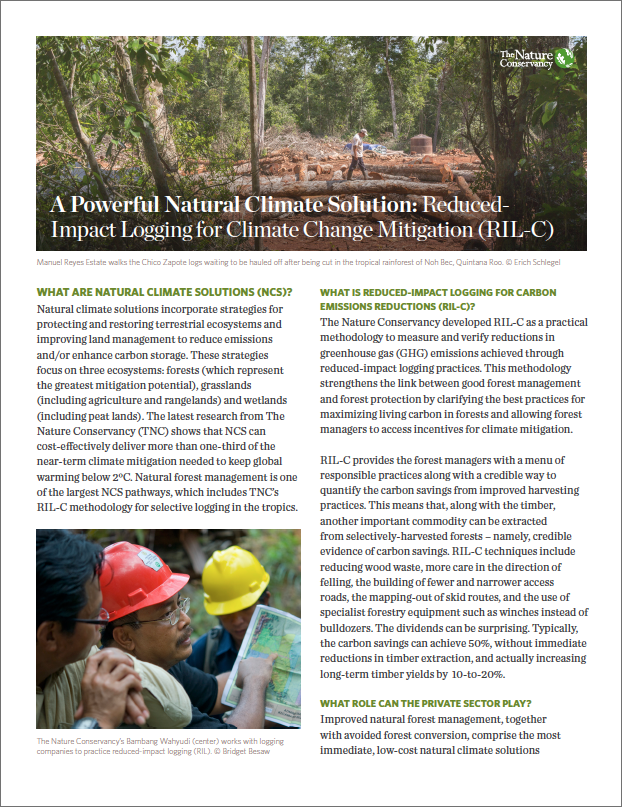
Fact Sheet: RIL-C
PDF
Reduced-impact logging for climate change mitigation (RIL-C) is a practical methodology to measure and verify reductions in greenhouse gas emissions achieved through reduced-impact logging practices.
DOWNLOAD -
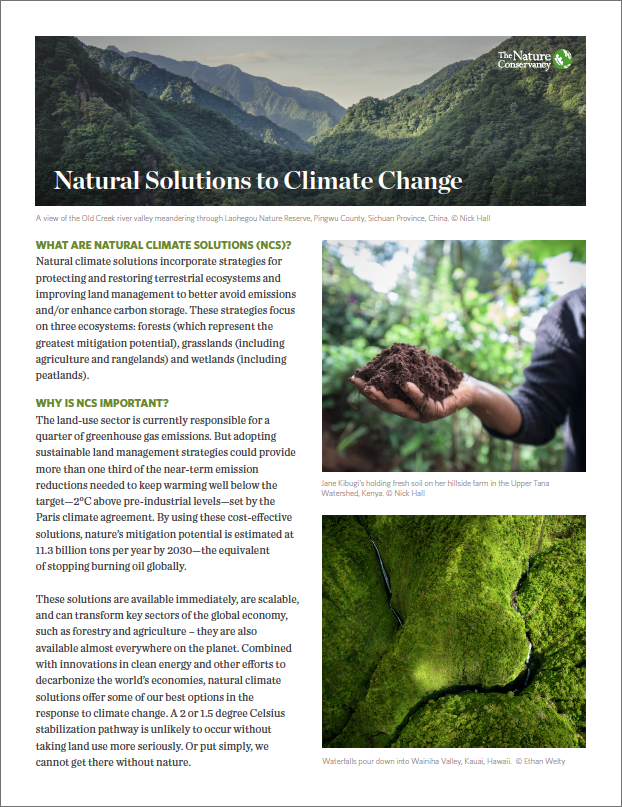
Fact Sheet: Natural Climate Solutions
PDF
Natural Climate Solutions incorporate strategies for protecting and restoring terrestrial ecosystems and improving land management to better avoid emissions and/or enhance carbon storage.
DOWNLOAD -
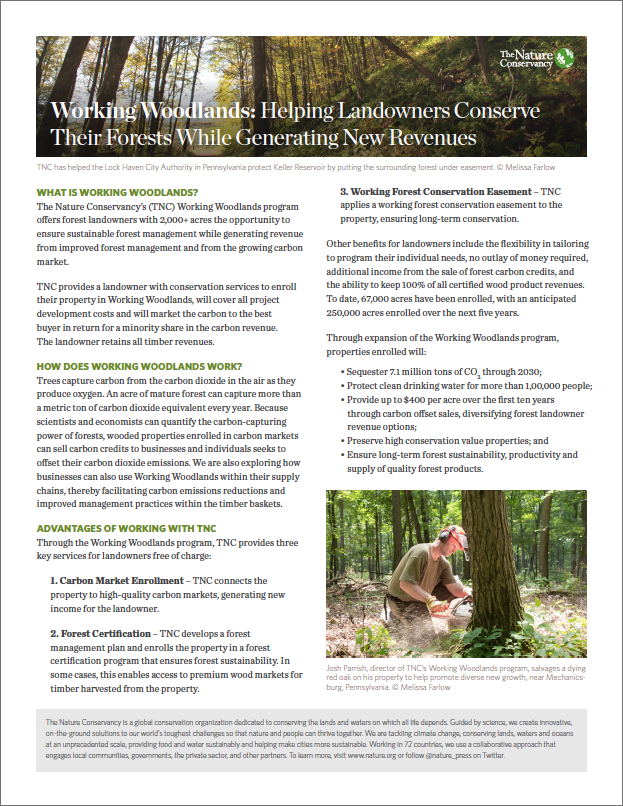
Fact Sheet: Working Woodlands
PDF
The Working Woodlands program helps landowners conserve their forest while generating new revenues.
DOWNLOAD
Global Insights
Check out our latest thinking and real-world solutions to some of the most complex challenges facing people and the planet today.





